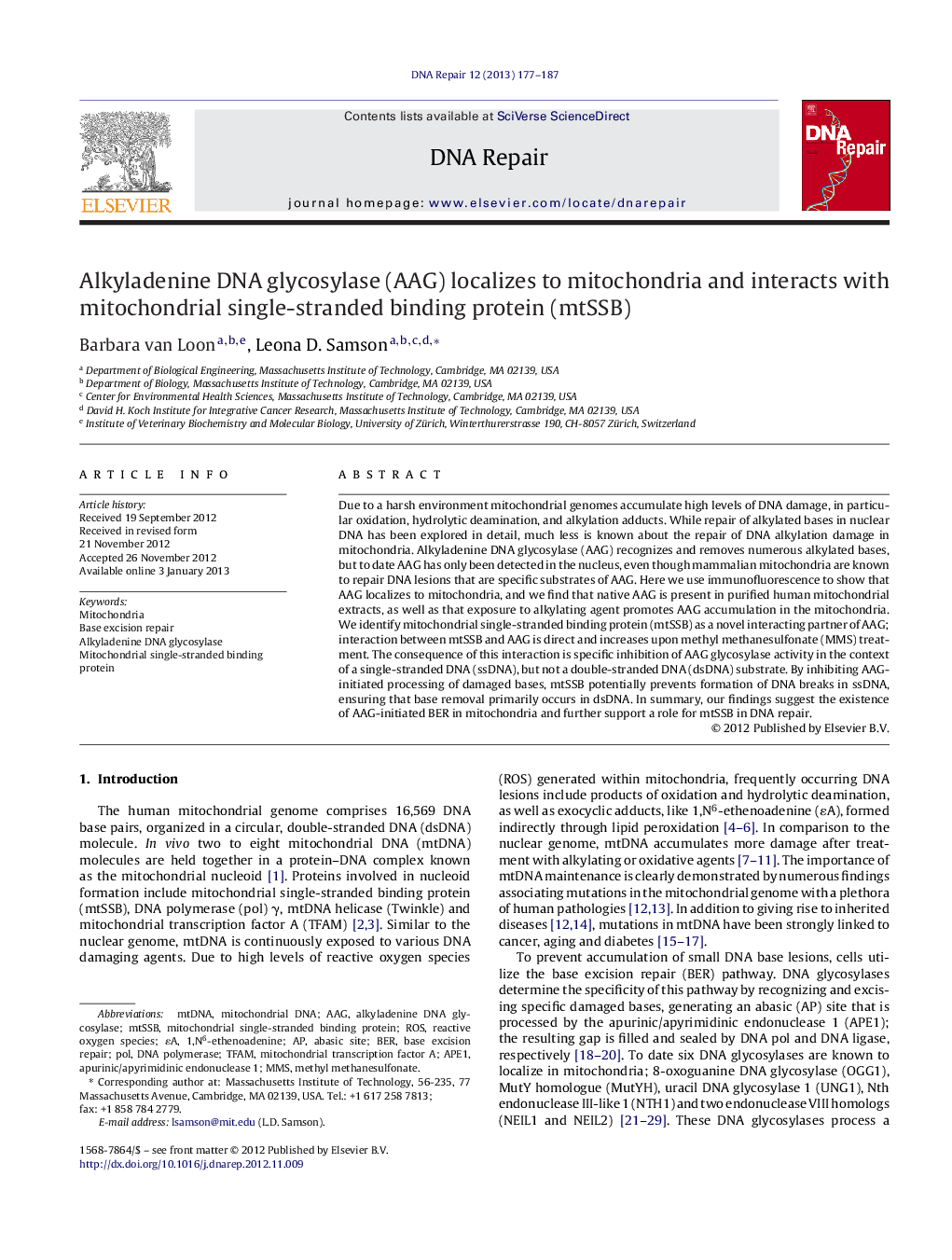| Article ID | Journal | Published Year | Pages | File Type |
|---|---|---|---|---|
| 1980240 | DNA Repair | 2013 | 11 Pages |
Due to a harsh environment mitochondrial genomes accumulate high levels of DNA damage, in particular oxidation, hydrolytic deamination, and alkylation adducts. While repair of alkylated bases in nuclear DNA has been explored in detail, much less is known about the repair of DNA alkylation damage in mitochondria. Alkyladenine DNA glycosylase (AAG) recognizes and removes numerous alkylated bases, but to date AAG has only been detected in the nucleus, even though mammalian mitochondria are known to repair DNA lesions that are specific substrates of AAG. Here we use immunofluorescence to show that AAG localizes to mitochondria, and we find that native AAG is present in purified human mitochondrial extracts, as well as that exposure to alkylating agent promotes AAG accumulation in the mitochondria. We identify mitochondrial single-stranded binding protein (mtSSB) as a novel interacting partner of AAG; interaction between mtSSB and AAG is direct and increases upon methyl methanesulfonate (MMS) treatment. The consequence of this interaction is specific inhibition of AAG glycosylase activity in the context of a single-stranded DNA (ssDNA), but not a double-stranded DNA (dsDNA) substrate. By inhibiting AAG-initiated processing of damaged bases, mtSSB potentially prevents formation of DNA breaks in ssDNA, ensuring that base removal primarily occurs in dsDNA. In summary, our findings suggest the existence of AAG-initiated BER in mitochondria and further support a role for mtSSB in DNA repair.
► Alkyladenine DNA glycosylase (AAG) localizes to the mitochondria. ► AAG directly interacts with mitochondrial single-stranded binding protein (mtSSB). ► mtSSB suppresses AAG explicitly in the context of ssDNA, but not dsDNA. ► Interaction between AAG and mtSSB ensures lesion processing within dsDNA.
